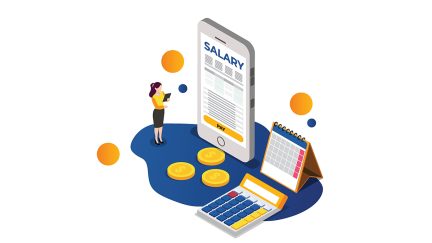Never miss a story — sign up for PLANADVISER newsletters to keep up on the latest retirement plan adviser news.
Readying for Those RMD Reminders
The industry is giving the issue significant attention, says Kevin Walsh, vice president of product management at Fidelity Institutional. Individual retirement accounts (IRAs) differ somewhat from 401(k) plans, Walsh tells PLANADVISER.
“In the IRA space, a person might have multiple IRAs, and each institution is probably helping the accountholder calculate the amount of distributions annually,” Walsh says. The individual has the option of combining the amounts in all the accounts, and using one account to take distributions from, leaving the others untouched, which meets Internal Revenue Service (IRS) requirements. “The IRS looks at each person as having one IRA account, even if there are multiple accounts,” he says.
Not so with defined contribution retirement plan account balances. People tend to consolidate employer-sponsored retirement accounts as they approach retirement, Walsh says, but those who don’t will need to take the RMD, calculated and distributed from each account. One caveat to bear in mind that is quite specific to the qualified plan market, Walsh points out, “If someone is still working at 70-1/2 and is not a 5% owner in the firm, that employee can postpone distributions until the actual retirement.”
One reason the issue is gaining attention, Walsh believes, is that people increasingly have a significant portion of their wealth in some kind of defined contribution (DC) plan or IRA. “As a result, the amount they need to distribute (from those accounts) will be higher,” he notes. “The IRA balances will increase; the RMDs will increase; and as a real dollar amount, the liability could increase if people don’t take the RMDs.”
Advisers can play an active role to ensure clients take their RMDs annually, Walsh believes. First, implement a process to review RMD reports and follow up with clients on a regular basis, well before the key dates: April 1 and December 31.
While it is acceptable to maintain multiple IRAs, Walsh observes that managing the RMD process across multiple IRA accounts and multiple platforms increases the possibility of missing an RMD and having the client subject to a 50% penalty. Account consolidation streamlines the process and cuts down that risk factor.
Systematic Distribution
Walsh likes the “set it and forget it” method, which can be set up through most IRA custodians, with which a support system calculates and distributes the RMD annually. One advantage, he says, is that the process means the IRA account owner has to provide instructions only once. Some custodians, like Fidelity, offer flexible distribution options that allow an IRA account owner to select the frequency and specific dates for payments. IRA account holders who want to distribute more than the required amount can generally gain access to an RMD Plus option. A systematic distribution plan helps decrease the likelihood of missing a distribution.
Advisers should consider incorporating IRA distributions as a standard topic for discussion in all quarterly and semi-annual client reviews, once the client reaches age 70, Walsh suggests.
Technically, IRA account owners have until April 1 of the year after they reach age 70 ½ to start taking RMDs, Walsh notes. However, if a client does not take their first RMD until the first quarter of the following year, this client will also be responsible for taking their second RMD by December 31 of that year.
In this situation, a client would be taking two RMDs in the same calendar year. Advisers should consider having all IRA account owners age 70 ½ or older, including those clients who just turned 70 ½, take their RMDs no later than December 31. By doing so, advisers are running one review annually in December to ensure all clients have met their annual RMD—reducing the likelihood of a client missing an RMD. For certain clients with large IRA account balances, this may help avoid an adverse tax consequence that could occur if the client takes two RMDs in one calendar year.
Plan advisers can do the same with retirement plan clients, depending on their relationship with the plan. If the adviser provides services to the participants as well as to the plan sponsor, and plays an ongoing role, RMD reminders could be an additional service. “A lot of 401(k) providers are certainly providing services in this,” he says. “Given the importance and the penalties, I’d certainly suggest that advisers work with plans.”
You Might Also Like:

2026 HSA Limits Released

IRS, Treasury Release Proposed Regulations on SECURE 2.0 Provisions
